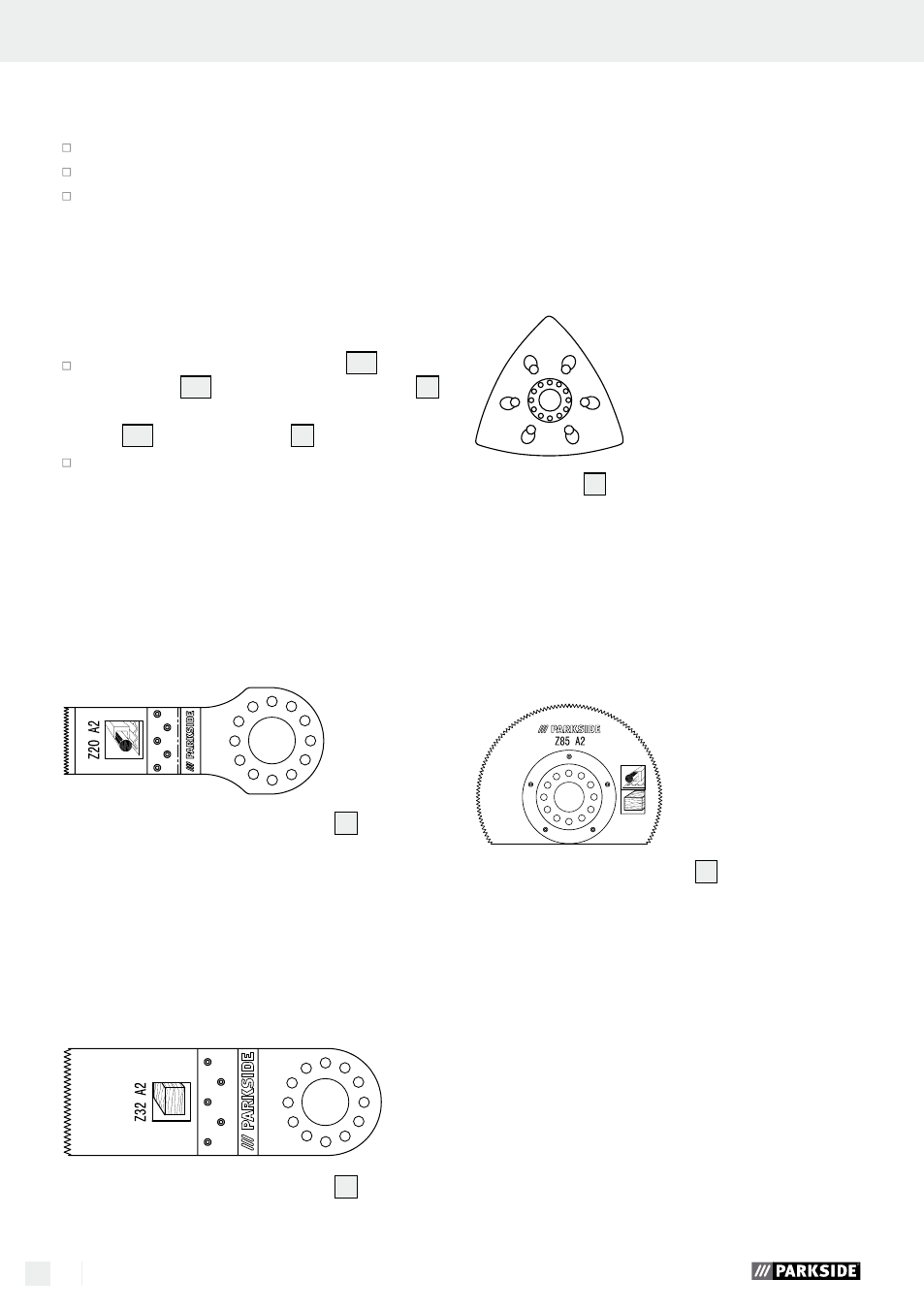Connecting a vacuum dust extraction device, Selecting the right tool – Parkside PMFW 310 A1 User Manual
Page 40

40 GB/MT
Assembly / Bringing into use / Maintenance and cleaning
Assembly
Wear a dust mask!
Always use vacuum dust extraction.
Ensure that your working area is well ventilated.
Observe the regulations applicable in your
country for the materials you are working on.
Q
Connecting a vacuum
dust extraction device
Slide together the extraction duct
13 b
and ring
connection
13 c
. Attach the dust extraction
13
to the unit. Secure by hooking the case mount-
ing
13 a
into the vent slots
3
(see Fig. H).
Push the hose of an approved dust extraction
equipment (e.g. a workshop vacuum cleaner)
on to the adapter for external exhaust suction.
Q
Selecting the right tool
Note: The attachment system with easy tool ex-
change is suitable for popular accessories.
Plunge saw blade (20 mm) Z20 A2
5
Materials:
Sheet and tube up to approx. 3 mm made of
aluminium, copper
Use:
· Cutting and trimming to length of tube and sheet
(see Fig. J)
Plunge saw blade (32 mm) Z32 A2
6
Materials:
Wood, plastic, plasterboard and other soft materials
Use:
· Cutting and plunge sawing
· Close to the edge sawing, even in difficult to
access areas
Example: Sawing of recesses in lightweight walls.
(see Figs. B and D)
Backing plate
7
Materials:
Wood (sanding sheets included), paint*, stone*
*depending on the sanding sheet
Use:
· Sanding at edges and in difficult to access areas
(see Figs. G and H)
Segment saw blade Z85 A2
8
Material:
Wood, metal
Use:
· Cutting and plunge sawing
· Close to the edge sawing, even in difficult to
access areas
Example: Laying parquet and other floor coverings,
including plunge sawing. (see Figs. C, E and F)
